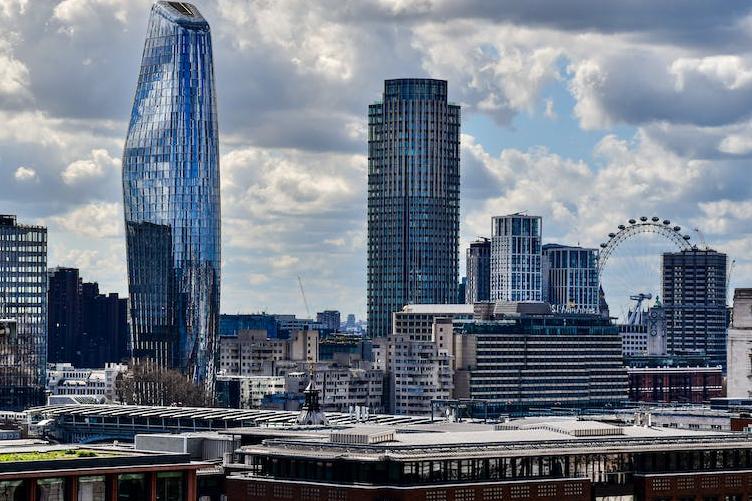London is a city that thrives on public transportation. The iconic red buses, in particular, have become a staple part of London’s image. These buses are an essential element of London’s public transportation system, transporting millions of passengers everyday to their destinations. However, for these buses to function smoothly and safely, they require consistent maintenance and repairs. The importance of maintaining these buses cannot be overstated, as it ensures passenger safety and the proper functioning of the transportation system. In this article, we will take a closer look at bus maintenance and repairs, exploring the kinds of maintenance and repairs required to keep these buses running efficiently. We will also delve into the significance of the bus maintenance and repairs industry in London, and how it impacts the transportation system. From routine check-ups to major engine repairs, we will provide a comprehensive guide to everything you need to know about the maintenance and repairs of London’s buses. So, let’s take a closer look at the world of bus maintenance and repairs, and how it keeps London moving.
Bus Maintenance Steps
Bus maintenance is essential to ensure the smooth functioning of London buses. The steps include regular inspection of the brakes, tires, and lights. The brakes should be checked for any wear and tear, and the brake fluid level should be regularly topped up. Tires should be checked for proper inflation, tread depth, and any visible defects. The lights need to be inspected, cleaned, and replaced if necessary.
Another critical aspect of bus maintenance is oil and filter changes. The oil level should be checked regularly, and the oil and filter should be changed at regular intervals to ensure the engine is running efficiently. The fuel system should also be inspected and cleaned regularly to prevent clogs or other issues.
The air conditioning system should also be checked to ensure it’s operating correctly. The filters should be changed at regular intervals, and the system should be recharged as needed.
Accepted payment methods for checking London Congestion Charge, such as how to check London Congestion Charge, include credit and debit cards. It’s important to note that regular maintenance is crucial to ensure the safe and reliable operation of London buses. By following these simple steps, buses can continue to provide efficient and safe transportation for everyone who relies on them.
Importance Of Regular Maintenance
Regular maintenance is essential for any kind of machinery, whether it is a car, a truck or a bus. London buses are no exception to this rule. Regular maintenance plays a crucial role in ensuring that London buses provide safe, reliable and efficient transportation to commuters.
London buses are complex machines that rely on a number of components to work together seamlessly. Regular maintenance ensures that these components are in good working order. This includes everything from the engine and transmission to the brakes, tires, suspension and electrical systems. By performing regular maintenance, London buses have a longer lifespan and are less likely to break down and cause delays for commuters.
Regular maintenance also helps to identify potential problems before they turn into major issues. By catching small issues early on, maintenance workers can address the problem quickly and prevent more serious and costly repairs down the line. This helps to keep London buses running smoothly and ensures that they are available for commuters when they need them.
Lastly, regular maintenance helps to ensure that London buses are operating in an environmentally friendly manner. By tuning the engine, changing the oil and air filters, and performing other routine maintenance tasks, London buses can operate more efficiently and emit fewer harmful pollutants into the atmosphere. This is good for the environment and for the health of those who live in and around London.
Common Problems And Their Solutions
Common problems faced by London buses are breakdowns, traffic congestion and difficulties with passenger flow. To prevent breakdowns, regular maintenance checks are necessary, and any potential problems should be identified and addressed promptly. Traffic congestion can be minimized through the use of reliable real-time traffic information, alternative routes, and transport planning to avoid bottlenecks. Ensuring smoother passenger flow involves the optimization of bus stop spacing and the use of real-time bus arrival information.
In addressing these problems, the introduction of new technologies is proving helpful. Telematics can be used to remotely diagnose and fix issues while a bus is on the road, reducing the downtime of the vehicle. Advanced Driver Assistance Systems (ADAS) can provide real-time traffic information to drivers and automated solutions to avoid accidents caused due to blind spots. AI-powered passenger flow management systems can analyze passenger data to provide the best routes, stop spacing, and loading times to optimize comfort and reduce waiting time.
Other initiatives that can be used to enhance the reliability and efficiency of the buses is the employment of environmentally friendly fuels such as electric or hydrogen motors, which reduce vehicle emissions while improving performance. Private-public partnerships can also be formed to adequately fund the transport sector, contributing to better equipment and services to improve commuter experiences.
Repair Process Explained Briefly
The repair process for London buses involves a series of steps aimed at identifying and fixing any issues that may arise during their operation. The first step involves an initial assessment of the bus to determine the extent of the problem. This is followed by a diagnosis of the specific issue, which may require the use of specialized tools and equipment.
Once the problem has been identified, the damaged parts are then removed and replaced. This may involve replacing components such as the engine, transmission, brakes, or suspension. The replacement parts are carefully selected by trained mechanics and tested thoroughly to ensure they meet the required specifications for the particular model of the bus.
After the repair work has been completed, the bus is then thoroughly inspected to ensure that all parts are functioning properly and meet the necessary safety regulations. The vehicle is also tested to ensure it meets emissions and noise standards set by regulatory bodies.
The repair process is critical in ensuring the safe and efficient operation of London buses. With proper repairs and maintenance, these vehicles can continue to provide reliable transportation for city residents and visitors alike.
Tools Required For Maintenance
The maintenance of London buses is vital to keep them running efficiently and safely. To conduct proper maintenance on these vehicles, mechanics require a set of tools that are essential to get the job done correctly. Here are some of the main tools required for maintenance:
1. Socket Set: This is used for loosening and tightening bolts that secure parts such as wheels, brakes, and suspension.
2. Wrench Set: This tool is needed to turn hexagonal bolts, nuts, and other fasteners that are not reachable with sockets.
3. Grease Gun: Buses have numerous moving parts requiring appropriate lubrication to work correctly. A grease gun is used to press grease into parts that need it.
4. Jack Stand: A jack stand is used to lift buses safely off the ground to perform maintenance underneath or replace parts like brake pads.
5. Multimeter: A multimeter is an instrument used to identify electrical problems by measuring voltage and circuit resistance.
6. Diagnostic Scanner: This tool is used to check the internal computer system of the bus, helping to identify issues and codes.
7. Torchlight: Finally, a torchlight is key to discovering dark and hard-to-reach areas of the bus.
In conclusion, these are some essential tools required for maintenance on a London bus, and they are crucial to ensure the proper functioning and longevity of the vehicle.

Types Of Bus Repair Services
There are various types of bus repair services used in the maintenance of London’s buses. First, there is routine maintenance, which involves conducting regular checks on the engine, brakes, suspension, and other parts of the bus to ensure they are in good condition. Secondly, there is mechanical repair, which focuses on fixing specific parts of the bus that are broken or malfunctioning. Mechanical repair services include engine repair, brake repair, transmission repair, and suspension repair, among others.
Thirdly, there is body repair, which involves fixing the bus’s body parts that have been damaged. The body repair services include painting, welding, and panel beating. Fourthly, there is electrical repair, which focuses on repairing the bus’s electrical components, such as the battery, starter, alternator, and other electrical systems. Lastly, there is preventive maintenance, which is aimed at preventing potential problems before they happen. One solution for how London can become more sustainable is through eco-friendly architecture.
In conclusion, the use of these various bus repair services helps to ensure the smooth and efficient operation of London’s buses. Regular maintenance and timely repairs prevent breakdowns, prolong the lifespan of the buses, and ensure the safety of the passengers.
Cost Of Bus Maintenance
The cost of bus maintenance for London buses is a significant expense for Transport for London (TfL). Maintenance involves regular servicing and repairs to keep the buses in optimal condition. A fleet of buses can accumulate hundreds of thousands of miles each year, which increases the likelihood of wear and tear on parts and components.
To maintain the fleet, TfL employs several teams of engineers who inspect each bus daily, appraising braking systems, engines, suspension, and other components. Routine inspections prevent potential and costly mechanical failures that can cause delays for passengers and disrupt bus schedules. In addition, unscheduled maintenance is carried out to address any emergency repair requirements.
TfL also operates several depots located throughout London where buses are maintained, and major repairs are carried out where necessary. The cost of maintaining these depots is also considerable. The depots must be equipped with specialized tools and machinery for performing complex repairs specific to bus models.

Ensuring buses are well-maintained also contributes to improving overall performance, ensuring buses are more reliable and fuel-efficient. As a result, London buses continue to provide excellent service to London’s commuters, and visitors alike.

Extending The Life Of Buses
London buses undergo maintenance regularly to extend their lives. Maintenance includes checks on the engine and transmission, brake inspections, tire rotation, fluid checks, and replacement of parts that show wear and tear. Buses that have reached their maximum service mileage or that have been on the road for a certain number of years are retired, sold or used in reduced service. Operators also schedule buses in their fleet carefully to ensure that the workload for each bus is reasonable and sustainable. Additionally, drivers are trained to operate the buses efficiently and smoothly, which helps to reduce wear and tear. At the end of their service lives, London buses are disposed of through environmentally-friendly means, such as recycling or using them for parts or scrap. By extending the life of buses, London can reduce its carbon footprint and save money on fleet replacement costs.
Importance Of Safety Checks
Safety checks are an essential factor in ensuring the smooth operation of London buses. These checks are necessary since buses carry a large number of passengers, and their safety becomes the top priority. Conducting regular safety checks is mandatory for bus operators to ensure that their buses are safe to operate.

The importance of safety checks lies in the fact that they help identify any potential hazards that could compromise the well-being of passengers. These checks cover various areas, including brakes, tires, steering, lights, mirrors, and signs. Any issues found during the inspection can be addressed before the bus hits the road, reducing the chances of accidents.
London buses work round the clock, covering a large portion of the city. Hence, it is crucial to monitor their condition regularly. Safety checks are an excellent way to ensure that each bus is thoroughly inspected, and any repairs or maintenance requirements are immediately addressed.
Through regular safety checks, bus operators can maintain a high standard of safety for passengers using London buses. Such a measure can help build their trust and confidence in the service. Moreover, it ensures that the buses are fully functional, reducing the chances of delays and inconvenience for commuters.
Supplement
In conclusion, London buses are a convenient and efficient way to travel around the city, whether you are a resident or a tourist. The buses are easy to use, and with the help of a few apps or printed maps, you can reach your destination in no time. The Oyster card and contactless payment methods make paying for your ride seamless, and with the introduction of cleaner and more eco-friendly buses, you can travel sustainably. The bus network is extensive, covering even the most remote of places, and running for 24 hours on some routes, making it an essential part of London’s transport system.
To use the London buses, you need to understand their route numbers, which are displayed at the bus stop, and the direction you need to board. Once on the bus, the electronic boards will display the next stop and any route information. You can also use the TfL bus app or Google Maps to track your bus and plan your route. Planning your journey by bus is quick and easy, with the TfL planner taking into account any disruptions or delays on the network.
London buses are accessible to everyone, including those with disabilities or mobility issues. Low-floor buses and ramps allow for easy boarding, and priority seating and wheelchair spaces are available. The buses operate on a frequent schedule, with some bus routes operating every few minutes during peak times. This makes the London buses an excellent option for those who want to avoid the crowded and sometimes expensive underground system.

In summary, London buses are a reliable and affordable mode of transportation for getting around the city. With an extensive network, eco-friendly buses and easy payment methods, the London buses are a great way to explore and travel in London.
